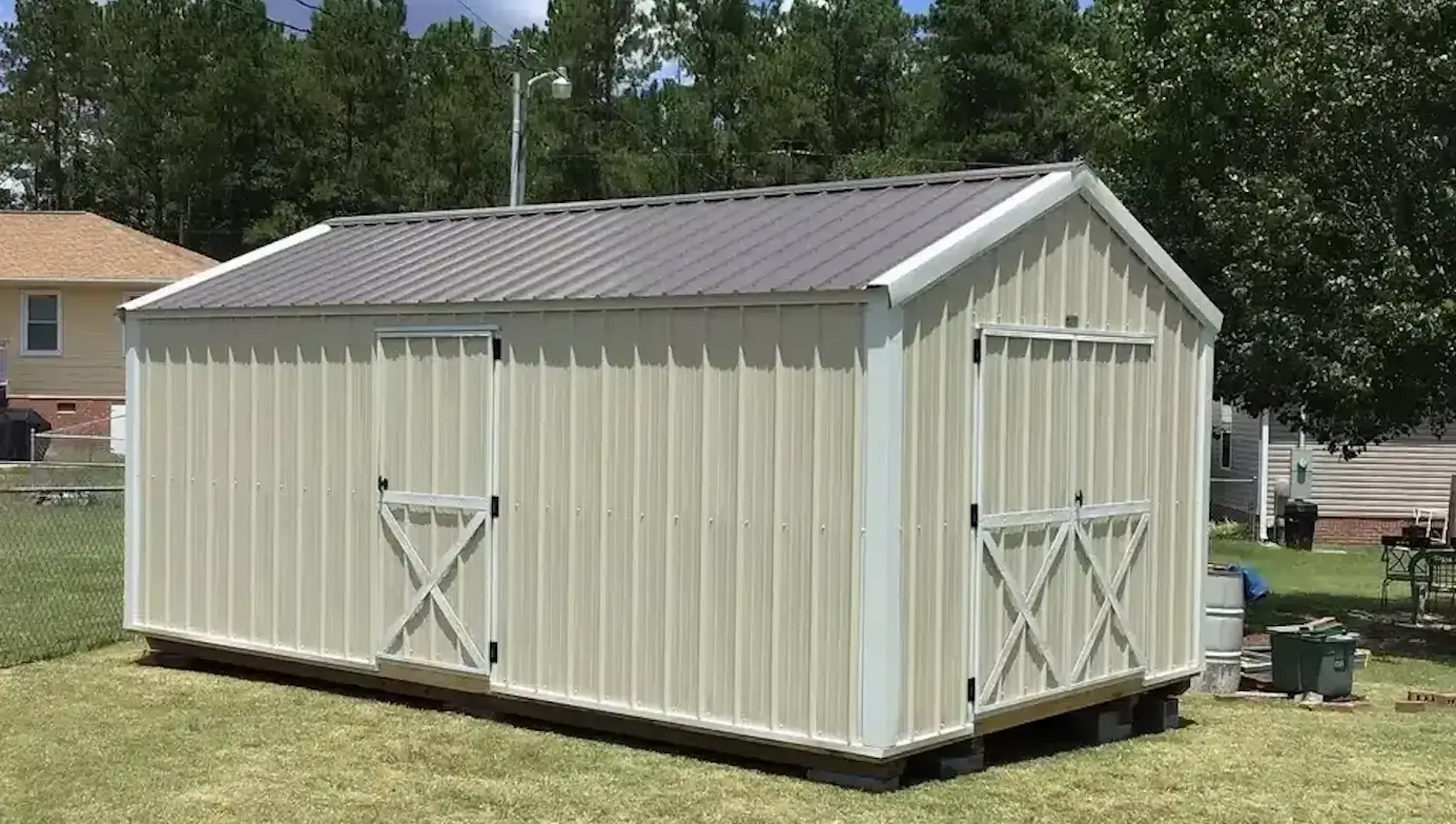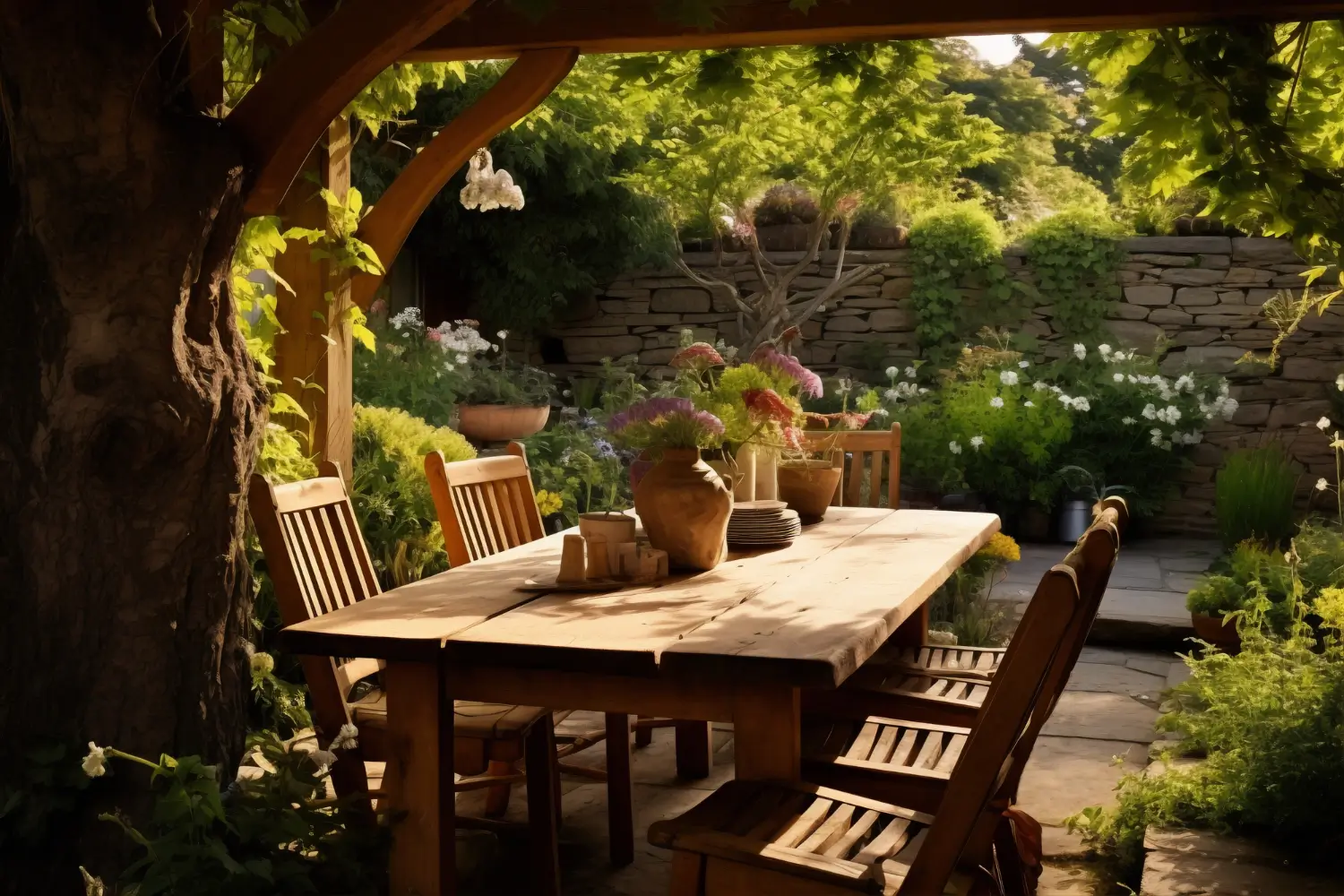- A well-designed patio can become a second living room for the home, right in the backyard, while a poorly designed patio offers little more than distinction from the neighbors.
- Choosing the suitable pavers for the climate, safety requirements, and ease of maintenance can result in a long lasting, workable, and aesthetically pleasing patio.
- Carefully chosen furniture, soft lighting, and greenery are at the heart of creating a space for relaxation and enjoyment.
A lot of people spend so much time indoors working and taking care of other things that they don’t realize how much potential their backyards have. A backyard can also be a sanctuary; a place to relax and meditate; a place to sit with family and friends. But without a well-designed patio, it can start to feel more like a cluttered, neglected space than a relaxing retreat.
Here comes in backyard patio ideas on a budget. A patio is something that can transform the overall vibe of the yard. Whether winding down and need a quiet place for relaxation, want to create a cozy patio setup for the family or a stylish space to entertain, the perfect patio can make it all possible. The right patio design can effectively turn a modest yard into a place that people will literally want to live in. Not only will it add more appeal, but it will also make the home more welcoming.
Choose the Right Pavers for Patio Design
Selecting the proper pavers is extremely important when creating a patio. The pavers will impact how long the patio lasts and how it looks. The right pavers will make the patio look good and last for years; the wrong ones could cause funky-looking damage, and may be more work than people want to handle. Knowing the best pavers for patios and considerations such as climate and safety can make the decision easier.
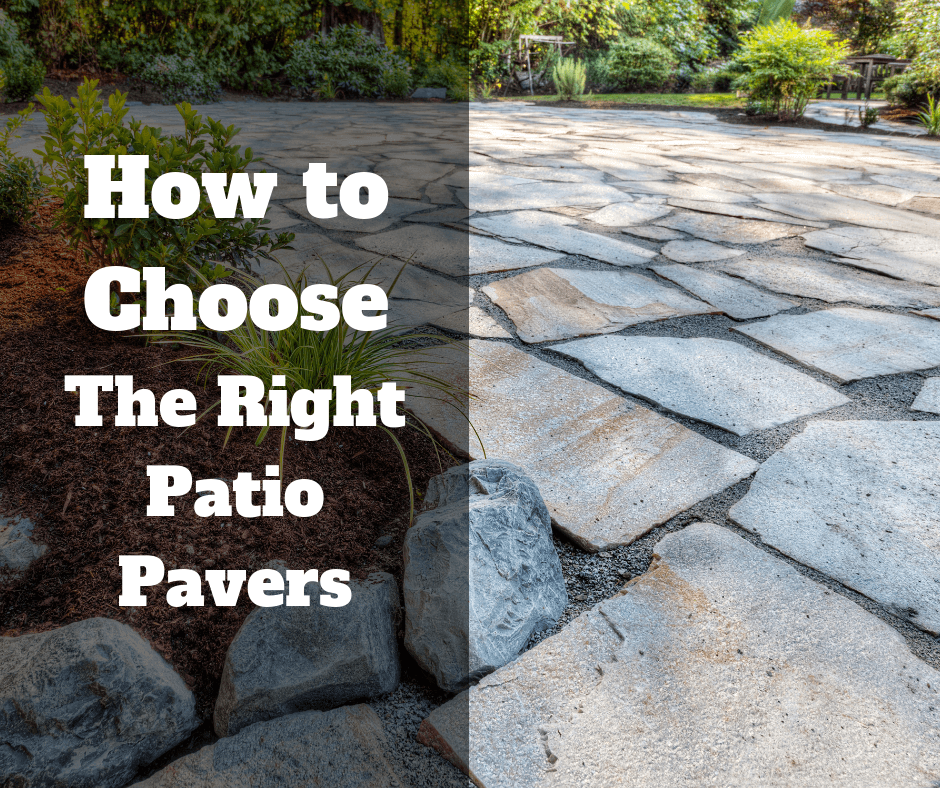
- Concrete Pavers: Affordable, easy to care and available in a broad variety of shapes, sizes and colors, concrete pavers. They are the perfect option for those who are desiring a long lasting, low maintenance patio at an affordable price.
- Brick Pavers: Brick pavers provide a classic, warm, natural look. They help give patio that quaint, rustic look. They might need a little bit more maintenance than concrete, but they’re strong and stylish and are commonly chosen.
- Natural Stone Pavers: Natural stone pavers such as limestone or flagstone come in different shapes, textures, and colors. No two stones are alike; the patio will appear custom. They are durable but more costly than concrete or brick.
Things to Consider
Here are a few things to consider when selecting pavers for a patio:
- Climate: Climate is influencing the decision of pavers. You need pavers that won’t crack during the winter in areas where the temperature drops below freezing. Brick can be more weather-sensitive, concrete and natural stone are better for cooler climates.
- Safety: The pavers need to feel grippy underfoot, especially when they are wet. Textured pavers are also a better alternative to avoid slips and falls.
- Maintenance: Some pavers, such as concrete, are less demanding than others, like natural stone, which may need to be sealed to prevent damage. It is important to consider how much time and effort you are willing to invest into the maintenance of the patio.
MEET THE EXPERT
- ■
Eric Arneson is a landscape designer who specializes in outdoor living spaces and has been honored with an ASLA Honor Award.
- ■
Tara Paige, also known as "The Patio Chic," is an expert in outdoor living and has made a name for herself as the owner and creator of an online community for patio designs for Black women.
Designing The Patio Layout
A carefully planned patio ensures that the space is well utilized and serves as a beautiful outdoor room people want to use to entertain, relax and enjoy nature.

Zoning the Space
Separating the patio into zones allows every space to have a function, from dining to lounging to gardening.
- Dining Zone: Have the feeling of home by positioning a table and chairs in a location that’s convenient not directly in a high-traffic path, but easy to access ensuring that the table is ready for the feast. Preferably it will be located close to the kitchen, or in the vicinity of the grill for easy access. People also may want a patio umbrella or a pergola to for patio shade solutions.
- Lounging Zone: Keep this apart from the eating zone and fill it with comfortable seating, such as outdoor sofas or lounge chairs. A hammock or swing might lend a laid-back feel. This area should be a bit cozier, a space to relax and entertain guests. People may add rugs, pillows, throws to make it cozy.
- Gardening Zone: If gardening is a part of the backyard escape, designate a corner or perimeter area for vegetation, flowers or even a small vegetable plot. Other garden beds or pots at the edge of the patio can help keep things neat and contained. If want to keep greenery around in a small space, consider a vertical garden.
Flow and Accessibility
Smoothing out the traffic flow and encouraging passage from one area to another guarantees that the environment will be comfortable and useable by all.
- Pathways: Plan for wide, unobstructed pathways between zones to ensure an easy traffic flow. Paths may be constructed of gravel, stepping stones or brick, all of which add texture and interest. They should be open, unobstructed to walk through, so everyone has enough room to pass easily.
- Practical Placement: Consider how the sun travels in the backyard. For example, if you have children or pets, an open corridor between the lounge and dining provides clarity.
- Avoid Clutter: Aim to never overcrowd furniture or decor that would make the space feel suffocating. Leave ample space for guests to move between spaces, so they can easily chat between the dining and lounging zones.
Creating Focal Points
Including the focal points, such as fire pits or water features, not only makes the space more attractive but more welcoming and restful.
- Fire Pit: A fire pit can make the patio an inviting center piece. It produces heat on cooler evenings and makes people want to congregate. Pick from black lattice, gray and white and other colors as well. Choose from modern backyard patio designs or a rustic one that will match the style and home. And place it either in the middle of the lounging area or against the end, it’s guaranteed to bring all the cozy vibes.
- Water Features: If you want a serene and calm space, add a small water feature, such as a fountain or a pond. The sound of trickling water is another advantage, providing for meditation, relaxation after a long day.
- Artistic Touches: Think about sculptures, a big statement planter or a vine-covered trellis to add visual interest. The idea is to employ focal points that not only add the detail, but also help dictate the mood and even the theme of the patio.
How to Build a Patio in Your Yard
Building your own patio is a good investment, but it can be done for less. And with good planning, there is no reason why the average homeowner can’t build a handsome surface to use as an outdoor room. If you want to know how to make a DIY patio, then this is the guide from digging the area, through to the finishing touches.
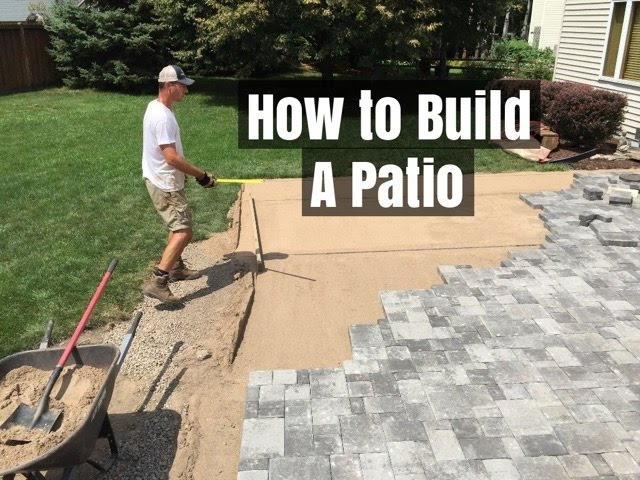
1. Plan the Layout and Measure the Area
The first consideration, however, is the overall layout of the patio. This is in terms of the size, shape and even the place it will occupy in the garden. Measure the spot, and make an outline with stakes and string. It’s also important to think about how the patio will be used for dining, relaxing, entertaining and whether it would get sun or shade.
2. Gather Necessary Tools and Materials
Those are all the tools and materials that people need at the beginning to make the process go smoothly. A few of the tools and supplies you will need:
- Shovel or other digging implement to excavate grass and debris
- Tape measure for accurate measurements
- Base layer of gravel or sand
- Pavers for the surface
- Rubber mallet for tapping pavers in position
- Sealer (optional) for finishing the pavers at the end
3. Clearing the Area
The first thing to do is clear the space. A debris free trench is then dug with a shovel. If the ground is uneven, level it off with a rake. A level and clean surface will facilitate a more even placement of the pavers.
4. Setting the Base
Then the half of the patio base can be built. Perfect would be a layer of gravel or sand. Gravel allows for drainage, so water does not accumulate on the patio. People will want to spread the gravel out evenly across the area and then use a tamper to pack it down so people have a nice solid base for the pavers.
5. Laying Pavers
If foundation looks all good, then go ahead and lay the pavers. Begin at one corner and lay out the pavers in the pattern you desire. Popular options are the grid and herringbone or random patterns. A rubber mallet can be used to tap each paver into position, leveling it with the others, and using a straight edge and a level to make sure that each paver is level.
6. Finishing Touches
Once in place, joint sand can be swept between all the pavers. This will secure the pavers in place and leave them less likely to shift around. The sand needs to be brushed into the joints, then any excess swept off. They can be sealed if preferred to prevent them from attracting dirt and stains. Make sure to follow the manufacturer’s instructions for sealing.
ℹ
Tips for Success
Here are some key tips to help make sure the patio installation goes according to plan:
- Maintaining Proper Slope for Water Runoff: It’s imperative to have a minimal slope in the patio, approximately one inch for every 4 feet so water can run off towards the center. This also prevents pooling and preserves the integrity of the patio.
- Ensuring Pavers are Level and Aligned: Double-checking for the level of the pavers often during installation is crucial. Carefully, hammer any pavers that are too high or low into place with the mallet. It's important for the patio to lay level and even.
- Safety Precautions During Installation: Protective gloves and closed toe footwear is recommended when working with tools. Minimize distractions and work in a well lit space to keep the build safe.
Enhancing the Backyard Patio
After the foundation of the patio is established, it’s time to round it out with the perfect furniture, lighting, greenery and decor. The details will take the space from functional to subtle, function to sanctuary. Here’s how to make just about any outdoor space better:
Furniture and Layout
People want the patio furniture to be attractive and sturdy. Weather-resistant materials like:
- Teak, aluminum, wrought iron or synthetic wicker are best as they will not rust, rot or mildew.
- Water- and stain-resistant fabric cushions make seating more enjoyable and keep seats dry in case of an unexpected shower.
- Furniture with removable covers make cleaning easier, and enables the life span of the product to be extended.
Chairs need to foster conversation, and resting. If user host larger gatherings, a sectional sofa can be a good option, whereas a few lounge chairs and a small coffee table can make for a cozy area for smaller groups. Throw in a hammock or a swinging bench and the relaxed feel is even better. The seating is of great importance when it comes to the feel of the patio. Here are a few ideas:
- For informal gatherings, placing seats around a central point and facing them inward encourages conversation.
- For a cozier vibe, install corner seating or add a fire pit for some focus.
- It may also be a good idea to place furniture so as to get the most natural light, in order to make sure that every part of the room is comfortable at any time of day.
Lighting
Lighting is key for the perfect patio vibe. Options include:
- Hanging string lights along the fences, pergolas, or trees create a whimsical, glowing effect.
- Lanterns are versatile and can placed on the ground or hung from hooks to introduce a rustic look.
- The LED fixtures keep the space discreetly lit, and they are energy-saving.
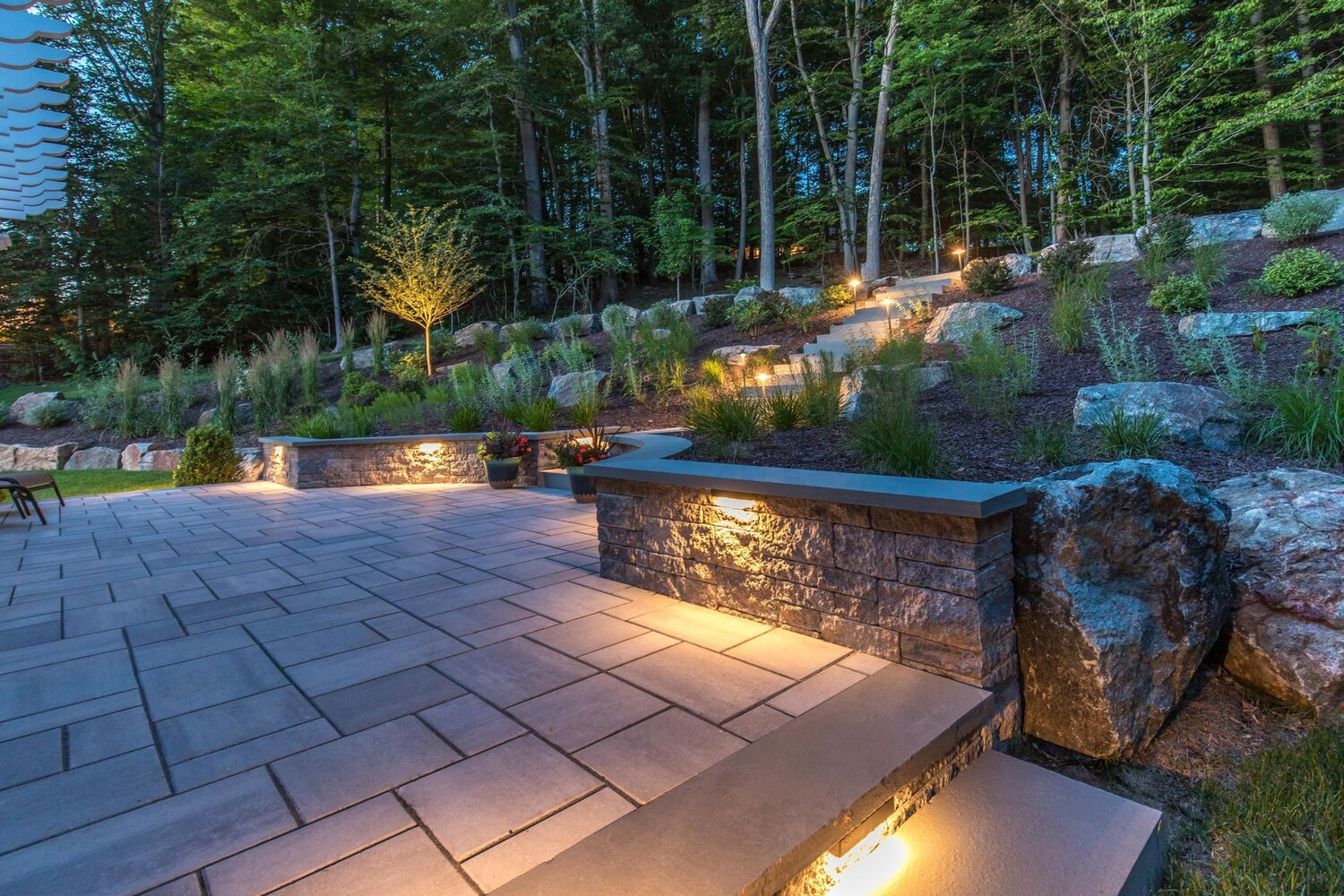
At night, less is more in lighting for an intimate ambiance. Consider:
- Accent lighting is used on pathways or the perimeter of the patio for soft lighting.
- Candles or tiki torches to create ambience either for a romantic evening or a rollicking party.
- Path or garden lights powered by the sun, an environmentally friendly, low-maintenance way to illuminate paths or garden beds.
Greenery
No patio is complete without greenery, and to enliven the patio you want as much of it as possible. Options include:
- Potted plants in big statement pots, or even smaller pots, for color and texture.
- Use for hanging garden or vertical planters when lack of space, dimension and depth to the living wall.
- These choices are ideal for a lush, welcoming landscape and can double as privacy shields.
When choosing plants, it is important that user also take the climate into consideration. Recommendations:
- In sunny regions, drought-resistant plants, such as succulents or lavender, are a great choice.
- Low-light plants like ferns or hostas thrive on shaded patios.
- Opt for plants with interest year-round, like evergreens or those that have seasonal color.
Decor
Outdoor rugs, cushions and throws provide color and comfort to a patio. Key points include:
- Outdoor rugs ground the space and add texture underfoot.
- Stitched cushions and throws soften the seating.
- Look for weather-resistant materials to keep your outdoor curtains sturdy and lasting.
Select colors and patterns that are in line with the overall design aesthetic:
- Bright, tropical prints for a lively look.
- Neutral palettes for a calmer and more minimalist style.
Other decorative touches like wind chimes, bird baths or water sounds from a small fountain can add another level of peace. These details contribute to the ambiance and help make the patio seem like your own little personalized retreat.
Visuals
Here are some of the most popular small patio design inspirations:
- Modern: Clean lines, minimal furniture, neutral hues and metallic finishes are the emphasis here.
- Rustic: Includes wood furniture, natural textures, stone pavers and lots of greenery.
- Tropical: Eye-popping colors, abundant greenery, rattan furniture and comfy, oversized seating.
FAQs
How to turn your patio into an oasis?
Throw in some comfy seats, some dim lights and a few houseplants. Personalize the decor with added flair and style.
How do I make my patio look cozy?
Opt for soft cushions, lush throw blankets and mats. String lights or lanterns add warm lighting.
How to make your backyard an oasis on a budget?
Inexpensive materials like gravel or mulch, DIY furniture and local nursery plants can help keep costs down.
The Bottom Line
A great backyard patio is more than just some pavers slapped on the ground; it is a functional, relaxing outdoor living space that is perfect for grilling, good conversation and spending time with family and friends. Whatever the case may be, with a great selection of furniture, plants and decor, and a bit of creativity, anybody can completely change their backyard into an inviting and beautiful space.
For the “green” minded, Growcycle offers eco-friendly landscaping options. This service is perfect for anyone, who wishes to add a greener touch to their backyard, or want to make sure that everything stays low impact.
Disclaimer: This material is for informational purposes only and should not be relied on for legal, medical, financial, or any other form of professional advice.
About the Author
Environmental Journalist Focused on Sustainable Agriculture
Victor Miller is an environmental journalist at Growcycle, specializing in sustainable agriculture. With a passion for storytelling, he highlights the latest trends, innovations, and practices that promote ecological balance and responsible farming.
